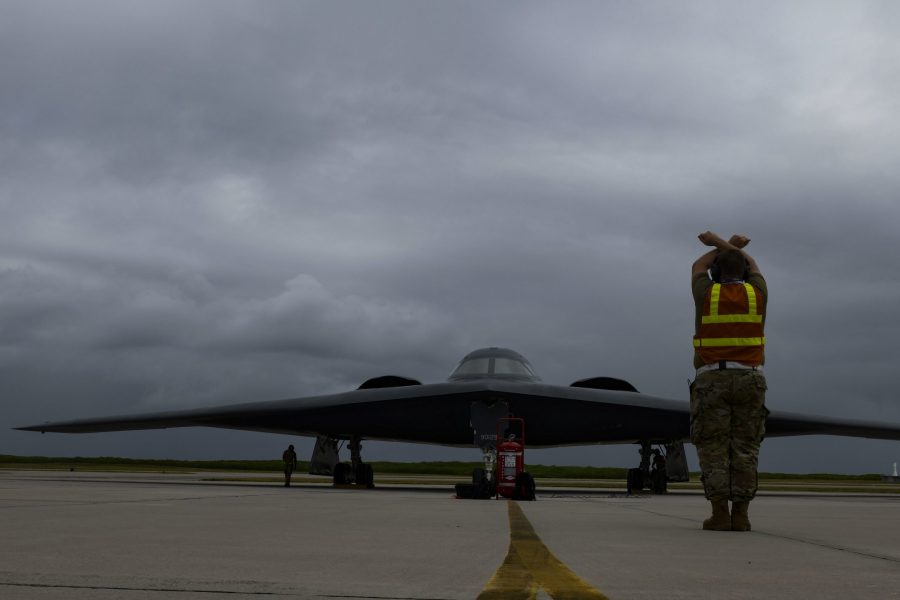The Air Force’s stealth bombers have returned to the Indo-Pacific.
Three B-2s arrived Aug. 12 at Naval Support Facility Diego Garcia from Whiteman Air Force Base, Mo., for the first Spirit bomber task force since a deployment to Hawaii in January 2019. The deployment marks the first time B-2s have deployed to the region since the service’s continuous bomber presence ended in April.
After the 29-hour flight to Diego Garcia, the B-2s joined B-1s already deployed to Andersen Air Force Base, Guam.
“We are excited to return to this important location. [Diego Garcia] puts the ‘INDO’ in INDOPACOM,” task force commander Lt. Col. Christopher Conant said in a Pacific Air Forces release. “This Bomber Task Force is our National Defense Strategy in action. We are sharpening our lethality while strengthening relationships with key allies, partners, and our sister-service teammates.”
While the bombers are supporting INDOPACOM, Diego Garcia also has been a deployment spot for bombers supporting combat operations in U.S. Central Command. In January, B-52s from the 20th Expeditionary Bomb Squadron deployed to Diego Garcia instead of Al Udeid Air Base, Qatar, in response to tensions with Iran, flying combat sorties into Iraq, Syria, and Afghanistan.
While the B-2s are at Diego Garcia, they will train with partner nations and serve as a deterrence in areas such as the South China Sea. During the 2019 task force, B-2s flew 27 sorties, totaling 171 hours in local and long-duration flights.
Meanwhile, the B-1s at Andersen continue to fly long-range sorties with partners. On Aug. 7, a B-1 from the 37th Expeditionary Bomb Squadron flew a bilateral training mission with 8 F-2s and 6 F-15s from the Japan Air Self Defense Force near Japan, and then flew a joint mission with the USS Ronald Reagan Carrier Strike Group in the Sea of Japan, according to a PACAF release.
Editor’s note: This story was updated at 8:20 a.m. Aug. 13 to reflect the regions the bombers are operating in.


